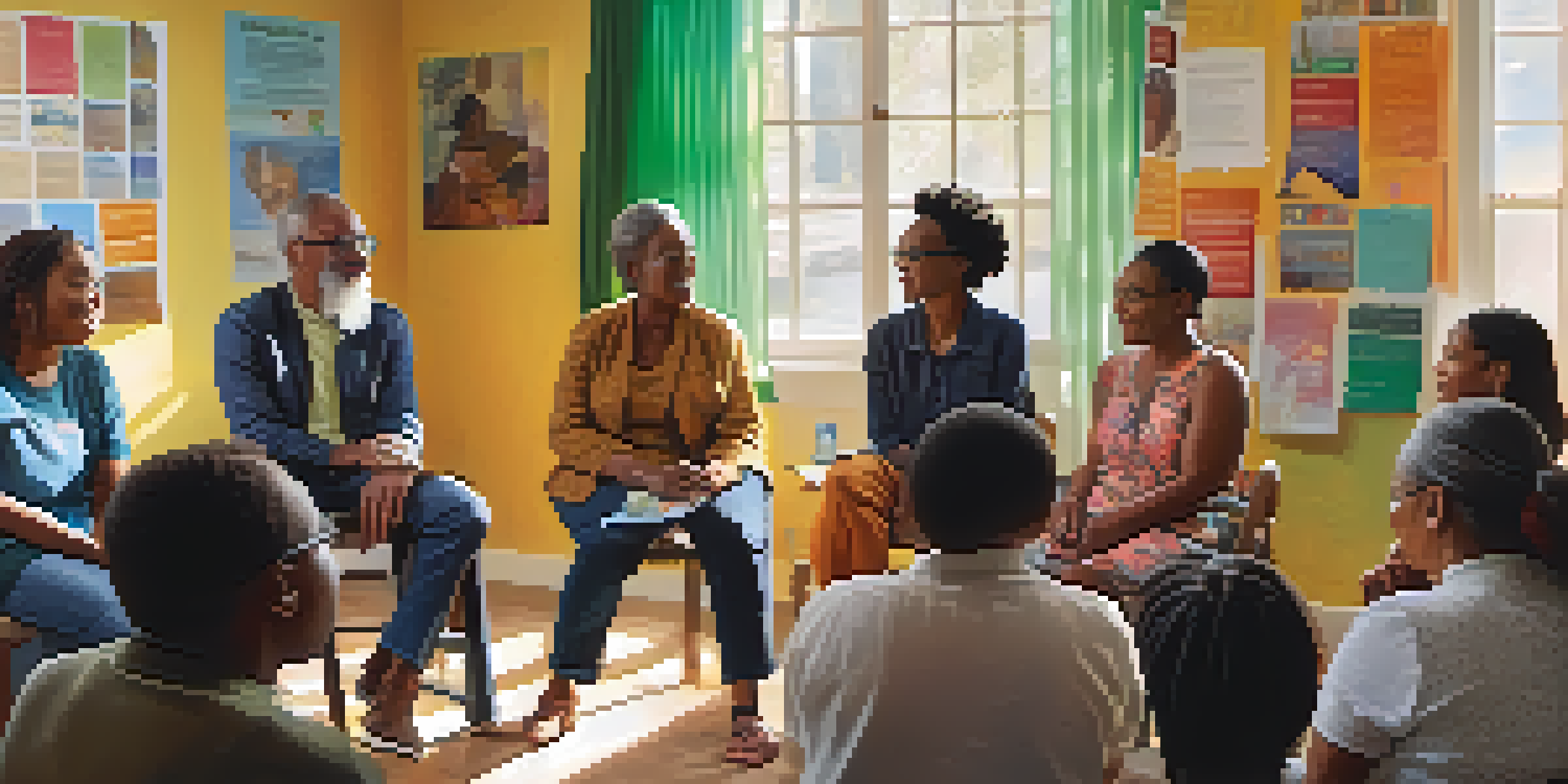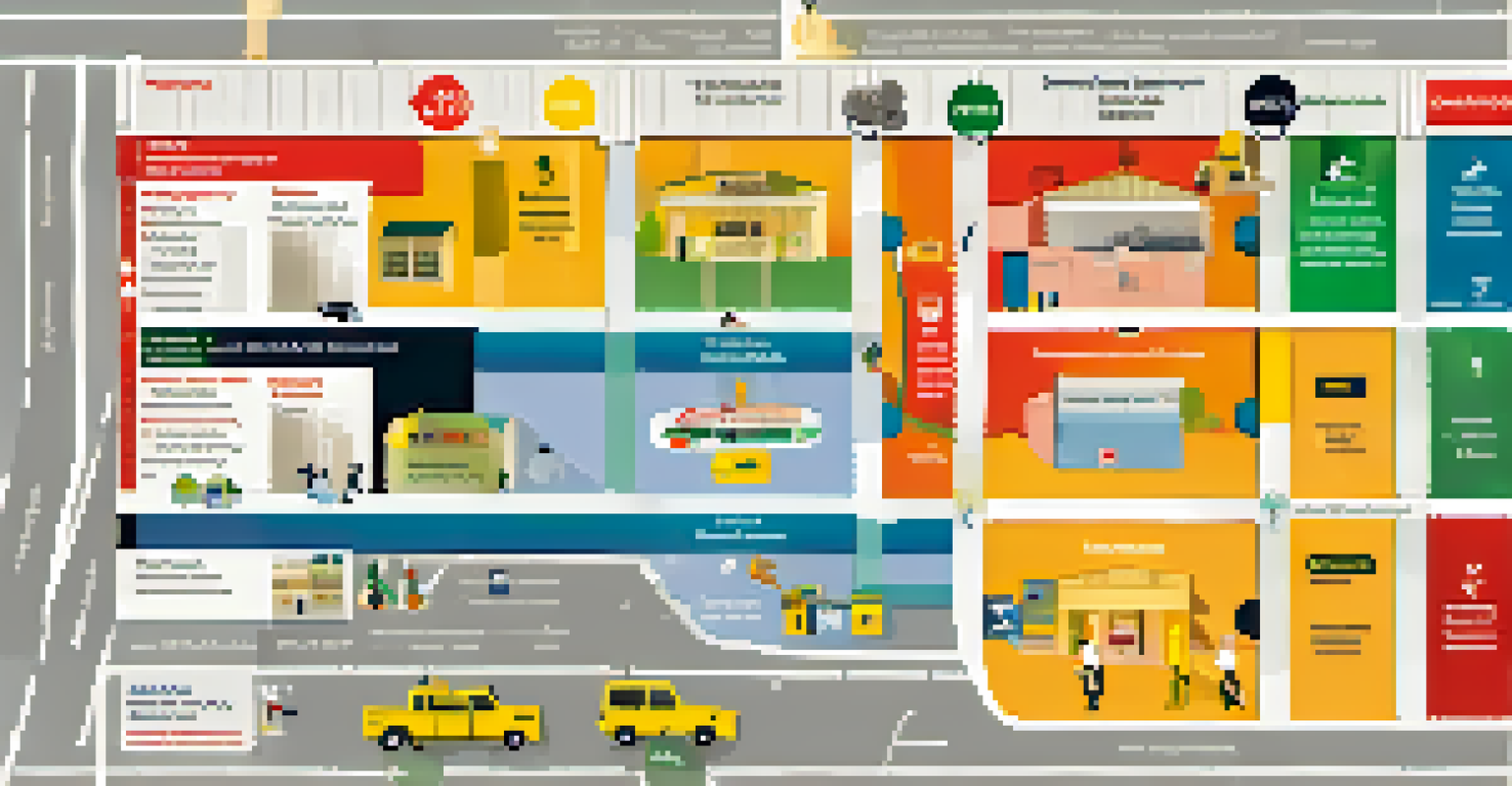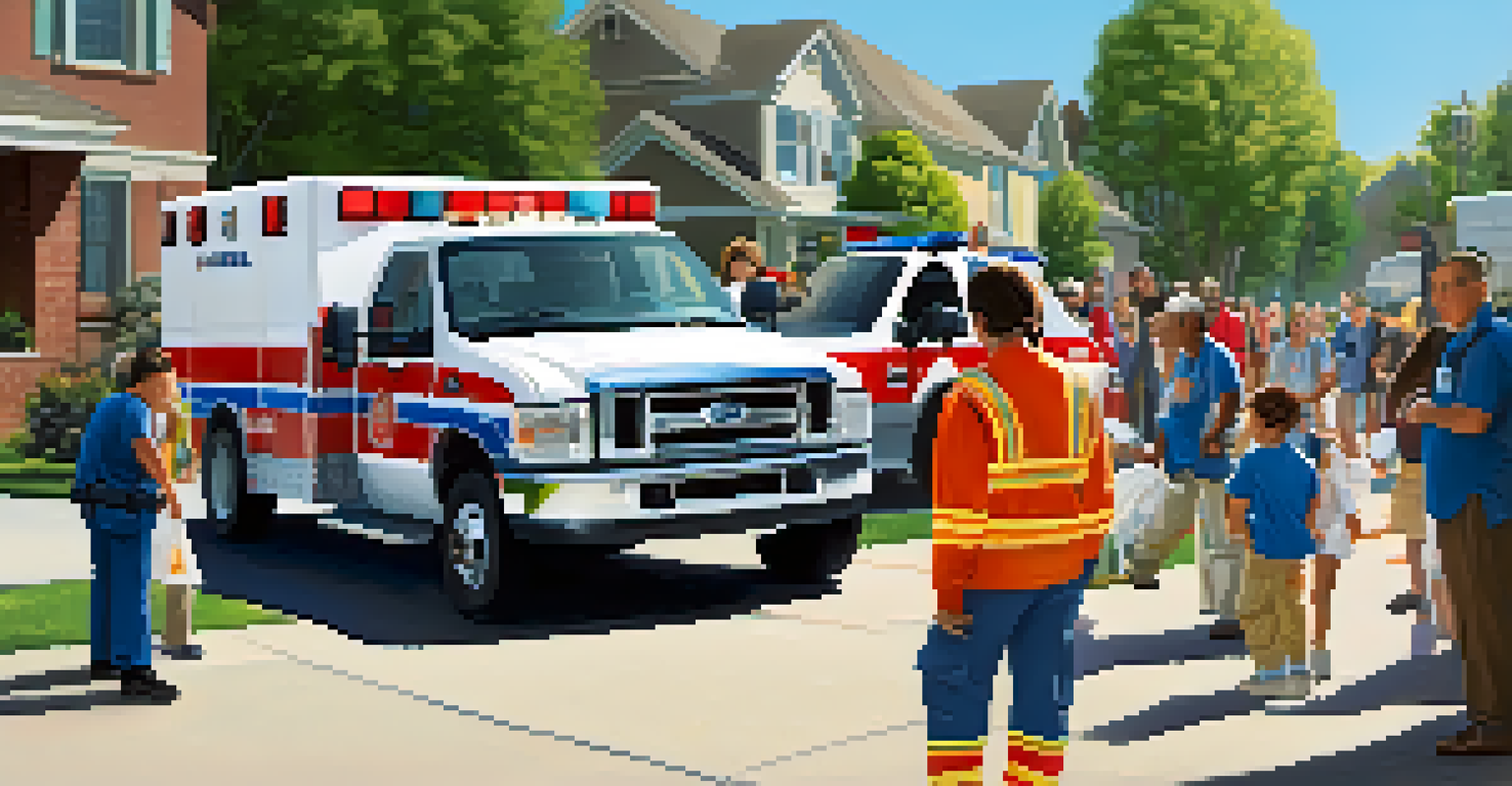Health Literacy in Emergency Situations: A Critical Need

Defining Health Literacy in Crisis Contexts
Health literacy refers to the ability to understand and use health information effectively. In emergencies, this skill becomes crucial as individuals may face overwhelming situations that require quick decision-making. For instance, knowing how to interpret medical advice or emergency protocols can significantly impact outcomes.
Health literacy is critical during emergencies; it empowers individuals to make informed decisions that can save lives.
In a crisis, misinformation can spread rapidly, making it essential for people to discern credible sources. When health literacy is low, individuals may struggle to understand vital information, leading to poor choices that could jeopardize their safety. Therefore, fostering health literacy is not just beneficial—it's a necessity.
Moreover, health literacy is not just about reading pamphlets or websites; it's about comprehension and application. During emergencies, this means being able to follow evacuation routes, understand first aid instructions, and recognize when to seek help. The clearer the information, the better equipped individuals will be.
The Role of Communication in Emergencies
Effective communication is key in emergencies and is deeply tied to health literacy. When authorities or health organizations provide clear, concise information, it empowers individuals to take action. For example, during a natural disaster, understanding evacuation plans or safety measures can save lives.

On the flip side, jargon or overly technical language can create barriers. If emergency information is not presented in an accessible manner, it risks leaving vulnerable populations confused and unprepared. Using simple language and visual aids can help bridge that gap, making information more digestible.
Importance of Health Literacy
Health literacy is crucial during emergencies as it helps individuals make informed decisions amidst overwhelming situations.
Additionally, ongoing community engagement plays a significant role. Regular workshops or informational sessions can enhance overall health literacy. This proactive approach ensures that when an emergency strikes, the community is better equipped to respond effectively.
The Impact of Social Determinants on Health Literacy
Social determinants, like education level, socioeconomic status, and access to resources, greatly influence health literacy. Individuals in marginalized communities often face more significant challenges in understanding health information, particularly during crises. This disparity can lead to unequal outcomes in emergency situations.
In a crisis, clear communication is not just helpful; it is essential for survival.
For example, those with limited education may struggle with written instructions, while language barriers can further complicate matters. These challenges highlight the need for tailored communication strategies that consider the diverse backgrounds of the population. By addressing these social determinants, we can enhance overall health literacy.
Furthermore, building community networks can help support those with lower health literacy. Connecting individuals with local resources, such as health educators or support groups, can empower them to navigate emergencies more effectively. In doing so, we foster a culture of resilience and preparedness.
Strategies for Improving Health Literacy
Improving health literacy, especially in emergencies, requires a multifaceted approach. Educational programs targeting various demographics can play a crucial role. For instance, community workshops tailored to specific needs can provide individuals with essential skills to process health information during crises.
Digital literacy also plays a part, as many people turn to online resources during emergencies. Ensuring that these resources are user-friendly and available in multiple languages can enhance understanding. Furthermore, equipping community leaders with training in health literacy allows them to disseminate information effectively.
Communication Enhances Response
Clear and accessible communication can empower communities to respond effectively during crises by improving understanding of health information.
Lastly, leveraging social media can be a powerful tool. Sharing bite-sized, easily digestible information can reach a broader audience quickly. By creating a culture of continuous learning, we can prepare communities for unexpected situations.
Examples of Health Literacy in Action
Consider the case of a community facing a health crisis, such as a pandemic. Communities with high health literacy levels were better able to follow guidelines on mask-wearing and social distancing. They understood not just the 'what,' but the 'why' behind these measures, leading to better compliance and reduced transmission rates.
In contrast, areas with low health literacy saw confusion and skepticism, which hampered effective responses. Clear messaging from trusted sources can make a difference, as evidenced by communities that organized local campaigns to educate residents about health measures. These proactive efforts showcased the power of health literacy.
Moreover, during natural disasters, individuals who understood the importance of early evacuation were more likely to seek safety. Case studies reveal that communities with health literacy initiatives had lower injury rates and better overall outcomes. This illustrates that informed citizens can significantly influence emergency response effectiveness.
Barriers to Health Literacy During Emergencies
Even with a concerted effort to promote health literacy, several barriers persist during emergencies. Time constraints often mean that information is rushed, leading to potential misunderstandings. In the chaos of a crisis, individuals may not have the mental bandwidth to process complex information.
Additionally, emotional stress can impede comprehension. When people are frightened or anxious, their ability to absorb information diminishes. This highlights the importance of supportive communication strategies that acknowledge these emotional states while delivering essential information.
Social Factors Affect Literacy
Social determinants like education and socioeconomic status significantly influence health literacy, impacting emergency response outcomes.
Finally, technological access remains a concern. In many areas, not everyone has reliable internet access, which can limit their ability to obtain timely information. Ensuring that information is disseminated through various channels—such as community meetings, phone calls, and printed materials—can help bridge this gap.
The Future of Health Literacy in Emergencies
Looking ahead, the future of health literacy in emergencies hinges on innovation and collaboration. As technology evolves, so too should our approaches to disseminating health information. Integrating new tools—like mobile apps and interactive platforms—can enhance accessibility and engagement.
Collaboration among healthcare providers, educators, and community organizations is vital for creating comprehensive health literacy programs. By pooling resources and knowledge, these entities can develop effective strategies that resonate with diverse populations. This collaborative spirit can foster a culture of preparedness.

Ultimately, the goal is to create resilient communities that can navigate emergencies with confidence. By prioritizing health literacy, we empower individuals to make informed decisions, ensuring their safety and well-being in times of crisis. Together, we can build a future where everyone is equipped to handle health-related emergencies.